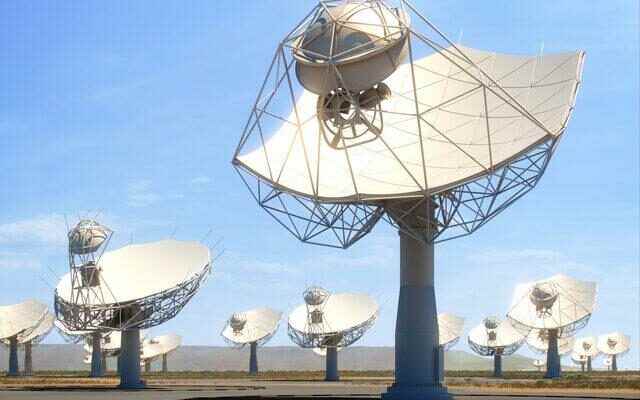We have been searching for aliens for many years, and radio telescopes are most helpful in our search. At these facilities of various sizes around the world, answers to the biggest questions in astrophysics are sought, while trying to catch clues about aliens. Everything starts today for the radio telescope project Square Kilometer Array (SKA), which is considered one of the great scientific projects of the 21st century.
GREAT DAY FOR SKA TO SEARCH ALIENS TODAY!
According to the news of the BBC, the construction phase of the SKA begins today. The SKA will be the world’s largest radio telescope when completed in 2028. Split into South Africa and Australia, the UK-based facility will address the biggest questions in astrophysics. So much so that he will perform the most sensitive tests of Einstein’s theories and even search for aliens.
Square Kilometer Array Organization general manager Prof. Phil Diamond said, “It’s been a 30-year journey. The first 10 years were spent developing concepts and ideas. The second 10 years were spent developing technology. The last ten years were spent on detailed design, securing the area, and governments agreeing to form a treaty organization (SKAO). “It was about providing the necessary funds for the start-up,” he said.
UNIQUE PRECISION AND RESOLUTION
The telescope’s initial architecture will include some 200 parabolic antennas and 131,000 dipole antennas resembling Christmas trees. The aim is to create an effective collection area of hundreds of thousands of square meters. This will provide the SKA with unmatched precision and resolution when examining celestial targets. The system will operate in a frequency range of roughly 50 megahertz to 25 gigahertz. In terms of wavelength, that’s in the centimeter to meter range.
This should enable the telescope to detect very faint radio signals from cosmic sources billions of light-years from Earth, including signals emitted in the first few hundred million years after the Big Bang.
“HE WILL CONTRIBUTE TO MANY FIELD OF ASTRONOMY”
One of SKA’s major tasks will be to trace the entire history of hydrogen, the most abundant element in the Universe. The observatory’s head of science operations, Dr. Shari Breen said, “SKA will contribute to many areas of astronomy. One of them might be these ‘fast radio bursts’ that have been detected. These things extract energy from our Sun in a fraction of a second, equivalent to an entire year’s worth of energy, and we have no idea what they are. no. How does this happen? is it possible? I hope the SDG has an answer.” used the phrases.
